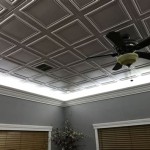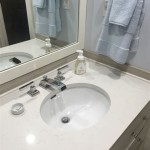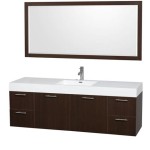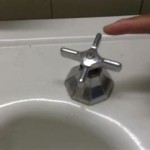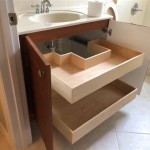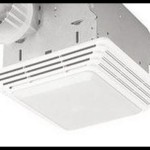BC Building Code Requirements for Bathroom Exhaust Fan Height
The British Columbia Building Code (BCBC) outlines specific requirements for bathroom exhaust fans to ensure proper ventilation and prevent moisture buildup, which can lead to mold growth and structural damage. While the BCBC doesn’t explicitly state a precise "height" requirement for bathroom exhaust fan installation, the code mandates adequate ventilation, which indirectly influences optimal placement and effectively enforces parameters surrounding height. This article will delve into the relevant sections of the BCBC, explaining how they relate to exhaust fan installation, focusing on the implied considerations for height and overall system performance in British Columbia's built environment.
Understanding the relationship between the BCBC's ventilation requirements and the physical placement of exhaust fans is crucial for builders, contractors, and homeowners. The overarching goal is to remove moisture-laden air effectively, and fan location plays a significant role in achieving this. While prescriptive height rules might be absent, performance criteria for air extraction are not. Therefore, proper height indirectly ensures sufficient airflow, fulfilling the code's intention.
It's essential to remember that the BCBC provides a minimum standard. Professionals may choose to exceed these standards to achieve better ventilation, especially in bathrooms with specific challenges like high ceilings, large showers, or frequent use. Furthermore, local municipalities may have additional bylaws or interpretations that build upon the BCBC, so consulting with local building officials is always recommended before installation.
Key Point 1: BCBC and Ventilation Requirements
The BCBC addresses ventilation through Division B, Part 9, which covers housing and small buildings. Section 9.32 outlines the requirements for ventilation systems. Although it does not detail absolute height for bathroom exhaust fans, the intent is to remove moisture and contaminants originating from sources like showering, bathing, and toilet use. The effectiveness of this removal strongly depends on the fan's proximity to the source of the moisture. This proximity translates into choosing an appropriate height that captures the rising steam and moisture effectively.
The code mandates that bathrooms be equipped with a mechanical ventilation system capable of exhausting air to the exterior. Continuous ventilation is generally preferred, often achieved through a continuously running low-speed fan, or intermittent ventilation, where the fan is operated only when needed (e.g., during and after showering). The required exhaust rate is specified in the BCBC, typically measured in cubic feet per minute (CFM) or litres per second (L/s).
The specified exhaust rate is directly linked to the performance of the fan. If the fan is not installed optimally, even a code-compliant CFM rating may not provide adequate ventilation. For instance, a fan mounted too high in a bathroom with a high ceiling may struggle to draw moisture quickly enough, leading to condensation and potential mold issues. Therefore, selecting the correct fan and understanding its performance characteristics related to height is critical.
The BCBC also emphasizes the importance of proper ducting. The length, diameter, and number of bends in the ductwork can significantly affect the fan's performance. Long, convoluted duct runs can reduce airflow, negating the benefits of a high-CFM fan. Insulating the ductwork is also vital, particularly in unconditioned spaces like attics, to prevent condensation within the duct and subsequent water damage or mold growth.
Specifiaclly Section 9.32.3.9, Ventilation of Bathrooms, states that "Every bathroom shall be provided with ventilation in accordance with Sentence (1) or Sentence (2)." Sentence (1) further outlines that "Every bathroom shall be provided with a window that opens to the outdoors and the openable area of the window shall be not less than 5% of the floor area of the bathroom." Sentence (2) states, "Every bathroom not provided with a window described in Sentence (1) shall be provided with a mechanical ventilation system conforming to Article 9.32.3.10." Which means if a bathroom does not have a window, mechanical ventilation is required. From Article 9.32.3.10, Mechanical Ventilation, it states, "A mechanical ventilation system required by Sentence 9.32.3.9(2) shall exhaust directly to the outdoors and provide not less than (a) 25 L/s of air, or (b) 1.5 L/s per square metre of floor area of the bathroom, if the ventilation system operates continuously.". Again this emphasizes the required ventilation rate without explicitly mentioning fan height but highlighting the intent.
Key Point 2: Indirect Height Considerations Through Performance
While the BCBC might not mandate a specific height for bathroom exhaust fans, the requirement for adequate ventilation inherently influences the most effective placement. To achieve the required airflow, the fan must be positioned to capture the moisture at its source. In most bathrooms, this means locating the fan relatively close to the shower or bath enclosure. If the ceiling is unusually high, simply installing the fan on the ceiling may not suffice. Alternative solutions involving lowered soffits or suspended mounting systems might be necessary to bring the fan closer to the steam and moisture.
The shape and layout of the bathroom also play a role. In a small bathroom with a standard ceiling height, a centrally located fan might be sufficient. However, in a larger or oddly shaped bathroom, multiple fans or strategically placed fans may be needed to ensure adequate ventilation throughout the space. The location of the toilet is also a consideration, especially if it is enclosed in a separate compartment within the bathroom.
Another performance aspect is the fan's noise level. The BCBC doesn't specifically regulate noise levels of bathroom exhaust fans, but quiet operation is generally desirable. A noisy fan might discourage users from running it as intended, compromising ventilation. When selecting a fan, consider its sone rating, which measures loudness. Lower sone ratings indicate quieter operation. Furthermore, proper installation can minimize noise transmission. This includes using vibration isolators and ensuring that the fan housing is securely mounted.
In addition to removing moisture, bathroom exhaust fans also help to remove odors. This is particularly important in bathrooms with toilets. A well-placed and properly functioning exhaust fan can significantly improve air quality and create a more pleasant environment. The effectiveness of odor removal depends not only on the fan's CFM rating but also on its proximity to the source of the odor.
Ultimately, the "correct" height for a bathroom exhaust fan is determined by its ability to effectively remove moisture and odors from the space. This requires careful consideration of the bathroom's layout, ceiling height, and usage patterns. It also involves selecting a fan with an appropriate CFM rating and ensuring that the ductwork is properly installed and maintained.
Key Point 3: Best Practices and Additional Considerations
Beyond the BCBC, several best practices can enhance bathroom ventilation and ensure optimal performance. These practices often involve exceeding the minimum code requirements and addressing specific challenges related to bathroom design and usage. One such practice is to install a timer switch for the exhaust fan. This allows the fan to run for a predetermined period after the shower or bath, ensuring that all moisture is removed from the air.
Another best practice is to choose a fan with a humidity sensor. These sensors automatically turn on the fan when humidity levels rise above a certain threshold, ensuring that ventilation is provided only when needed. Humidity sensors can save energy and prolong the life of the fan by preventing unnecessary operation. However, it must be ensured that the sensor is properly calibrated to accurately detect humidity levels.
Maintenance is also crucial for ensuring the long-term performance of bathroom exhaust fans. The fan grill should be cleaned regularly to remove dust and debris that can obstruct airflow. The fan motor should also be inspected periodically and lubricated if necessary. Ducts should be checked for obstructions and leaks, and any damage should be repaired promptly. Neglecting maintenance can significantly reduce the fan's efficiency and lifespan.
Furthermore, consider the integration of the exhaust fan with the overall building ventilation system. In airtight homes, improper ventilation can lead to negative pressure, which can draw pollutants from outside or cause backdrafting of combustion appliances. A balanced ventilation system, incorporating both supply and exhaust ventilation, can help to mitigate these risks. This is especially important in newer homes built to higher energy efficiency standards.
When renovating existing bathrooms, it is an opportunity to upgrade the ventilation system to meet current code requirements and incorporate best practices. This might involve replacing an old, noisy fan with a newer, more efficient model, or relocating the fan to a more strategic location. It's also a good time to inspect and upgrade the ductwork to ensure optimal airflow.
Choosing the right bathroom exhaust fan and installing it correctly is essential for maintaining a healthy and comfortable indoor environment. While the BCBC provides minimum standards, exceeding these standards through best practices and careful consideration of the bathroom's specific needs can significantly improve ventilation performance. Staying informed about the latest advancements in ventilation technology and consulting with qualified professionals can also help to ensure that the ventilation system is properly designed and installed.
In summary, though the BCBC does not prescribe fixed height requirements for bathroom exhaust fans, adequate ventilation is mandated, influencing placement. The fan's location is crucial for efficient moisture removal, requiring strategically placing the fan near moisture sources like showers or bathtubs. Understanding and adhering to these considerations is essential for builders, contractors, and homeowners in British Columbia to ensure compliance and optimal performance of bathroom ventilation systems.

Ventilation Canadian Home Inspection Services
Hrv Primary Ventilation Exhaust Guidelines
Hrv Primary Ventilation Exhaust Guidelines
Hrv Primary Ventilation Exhaust Guidelines

Bathroom Exhaust Fans Greenbuildingadvisor

Residential Bathroom Code Requirements Design Tips

Venting A Bath Fan In Cold Climate Fine Homebuilding
What Size Of Vent Pipe Is Required For A Toilet Quora

Panasonic Whisperfit Dc Led Pick A Flow 50 80 110 Cfm Energy Star Quiet Ceiling Bathroom Exhaust Fan Flex Z Fast Install Bracket Fv 0511vfl1 The Home Depot

Ext External Mount Bathroom Fans Continental Fan
Related Posts
